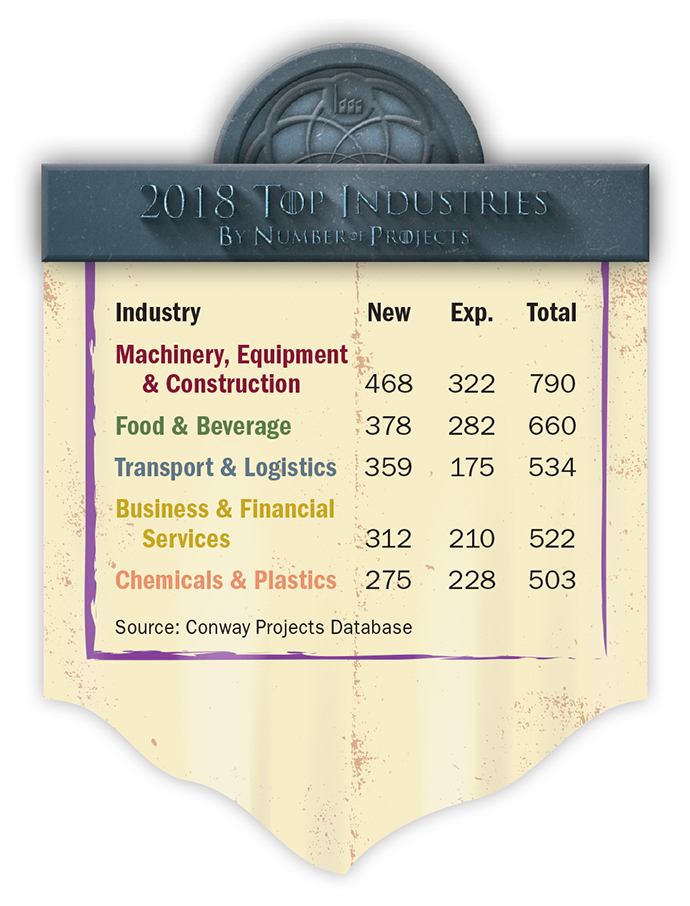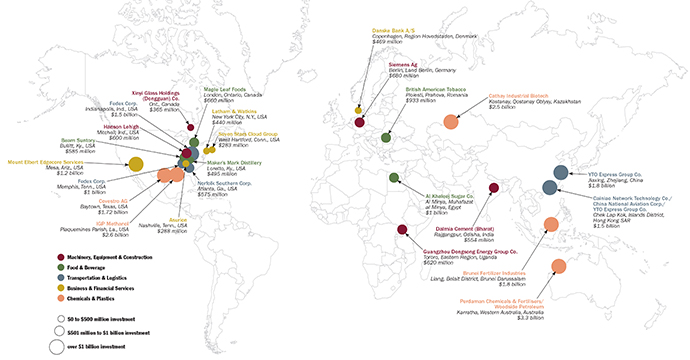
Following the same industry sector groupings that Conway’s World’s Most Competitive Cities report uses in evaluating regional economic strength, this year’s tallies of the top industries of 2018 show machinery, equipment & construction leading the way. For most countries, that’s a good sign.
That sector is followed by food & beverage, transportation & logistics (including e-commerce), business & financial services, and chemicals & plastics. The map on these pages displays the top five projects by capital investment in each of these top five sectors.
A glance at the biggest investments across these sectors shows enough cement plants to construct a few competitive cities, a decided swing toward emerging markets, and a decided taste for sugar in either its sweetener or alcohol forms.
The next-busiest sectors were IT & communications, life sciences, consumer products, automotive and metals, with electronics finishing just out of the Top 10 at No. 11 with 305 projects.
Transport & logistics and life sciences had twice as many new projects as expansions — a sign of those sectors’ rapid growth as well as mobility. Chemicals & plastics (attracting the highest dollar amounts) and metals project totals were closest to even between greenfield and expansion investments, reflecting accumulated investment in sites that are often multi-layered, legacy operations.
The numbers come from facility projects tracked worldwide in 2018 by Conway Analytics. To qualify for the Conway Projects Database, a project must involve new construction and must meet one of three criteria: 1) attract at least $1 million in investment, 2) create at least 20 new jobs, or 3) create at least 20,000 new sq. ft. of space.


